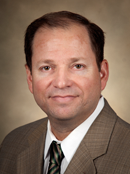John Van de Lindt, Colorado State University – Community Resilience
 Are some communities more resilient after disasters?
Are some communities more resilient after disasters?
John van de Lindt, professor of infrastructure at Colorado State University, looks to resilience science to find out.
Dr. John W. van de Lindt is the George T. Abell Distinguished Professor in Infrastructure in the Department of Civil and Environmental Engineering at Colorado State University. He formerly was a Professor at the University of Alabama where he held the Garry Neil Drummond Endowed Chair in Civil Engineering. He has also previously served on the faculty at Colorado State University and Michigan Technological University. Over the last two decades Dr. van de Lindt’s research program has sought to improve the built environment by making structures and structural systems perform to the level expected by their occupants, government, and the public. This has been primarily through the development of performance-based engineering and test bed applications of building systems for earthquakes, hurricanes, tsunamis, tornadoes and floods. To accomplish this has necessitated coupling nonlinear dynamics, including stochastic approaches in both time and space with structural reliability during extreme loading events. His work includes both the development of new nonlinear numerical models and experimental investigations to calibrate those models and support hypotheses. Over the last twelve years he has successfully led federal, state, and industry sponsored projects totaling approximately $35M. As a result of these projects he has published approximately 350 technical publications including 140 peer reviewed journal papers in scholarly journals such as the Journal of Structural Engineering, Journal of Performance of Constructed Facilities, Engineering Structures, Structural Safety, the Journal of Earthquake Engineering, Wind and Structures, and presents work frequently at both national and international conferences. Professor van de Lindt has given a number of keynotes and invited talks around the world including Japan, China, India, Italy, Canada, and New Zealand. Much of Professor van de Lindt’s current work focuses on community and urban resilience and he serves as Co-Director for the NIST-funded Center of Excellence for Risk-Based Community Resilience Planning: http://resilience.colostate.edu.
Community Resilience
In October 2016, Hurricane Matthew made national headlines as it battered hundreds of communities along the southeastern United States. One of those places was Lumberton, North Carolina, a racially diverse city of 20,000 people, many of whom live in poverty.
In the weeks after Lumberton withstood devastating flooding, it hosted some unusual out-of-town visitors. I, along with my colleagues at several partnering institutions, went to Lumberton to begin documenting that community’s damage and recovery from the flood. We have since returned several times.
We are trying to measure something that is extremely complex: What makes a community resilient to disasters? And, what can we as scientists do to help communities prepare for disasters, like hurricanes, floods, or fires? We are using what we learn from Lumberton to develop an entirely new area of inquiry, called resilience science.
In Lumberton we are observing, for example, how public schools cope with disruption. We are collecting data on individual households’ damage. We are also modeling long-term housing and recovery.
Through our work we have confirmed that race and socioeconomic status are key predictors of longer recovery from disasters. This knowledge will help us develop models for other communities with different socioeconomic makeups.
One thing we know is that resilience science is not just engineers checking for water lines, or social scientists understanding human behaviors. To do resilience science, we have to work together.
Our ultimate goal is to create a resilience model and a software environment that scientists can use to inform decision-makers, in order to strengthen their communities. That way, they can protect themselves from the next disaster – which we hope will never happen.


